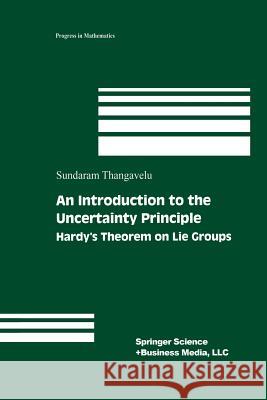An Introduction to the Uncertainty Principle: Hardy's Theorem on Lie Groups » książka
An Introduction to the Uncertainty Principle: Hardy's Theorem on Lie Groups
ISBN-13: 9781461264682 / Angielski / Miękka / 2012 / 174 str.
An Introduction to the Uncertainty Principle: Hardy's Theorem on Lie Groups
ISBN-13: 9781461264682 / Angielski / Miękka / 2012 / 174 str.
(netto: 384,26 VAT: 5%)
Najniższa cena z 30 dni: 385,52
ok. 22 dni roboczych
Bez gwarancji dostawy przed świętami
Darmowa dostawa!
In 1932 Norbert Wiener gave a series of lectures on Fourier analysis at the Univer- sity of Cambridge. One result of Wiener's visit to Cambridge was his well-known text The Fourier Integral and Certain of its Applications; another was a paper by G. H. Hardy in the 1933 Journalofthe London Mathematical Society. As Hardy says in the introduction to this paper, This note originates from a remark of Prof. N. Wiener, to the effect that "a f and g = j] cannot both be very small." ... The theo- pair of transforms rems which follow give the most precise interpretation possible ofWiener's remark. Hardy's own statement of his results, lightly paraphrased, is as follows, in which f is an integrable function on the real line and f is its Fourier transform: x 2 m If f and j are both 0 (Ix1e- /2) for large x and some m, then each is a finite linear combination ofHermite functions. In particular, if f and j are x2 x 2 2 2 both O(e- / ), then f = j = Ae- /, where A is a constant; and if one x 2 2 is0(e- / ), then both are null.











